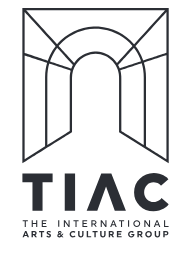WHITE DIALOGUES - Contemporary exhibition
December, 7th at 7 p.m.
Via Luna 8r, Florence
WHITE DIALOGUES | BETWEEN BEING AND NOTHINGNESS raises several questions about the role of white and emptiness in visual arts and the philosophical meaning of representation. The exhibition deals with Romano Morando PERCEPTION OF NEGATIVE and other contemporary artworks by young Chinese and Italian artists, all linked by the same theme: white and its self-modality. In a Socratic sense, dialogue is an instrument that, through interrogations between interlocutors, aims to correct an initial error in order to reach a shared truth that must always be called into question. The aim is to focus on a different visual modality, referable to as “visual reduction”, thus generating an “active receptivity” based on subjectivity and thereby seizing the phenomenological manifestation of white and the absence/presence dualism. The concept of an empty substantiality, in both Eastern and Western culture, is the experience of 'vain', the inadequate state of the human being: the obsession with the semantics of emptiness, i.e. the transcendental nihilism of emptiness. These very different cultures are actually joined on this point, a “bridge on the void” of which Nietzsche wrote in “The Antichrist” and “Thus Spoke Zarathustra”. There is no place and no body, only the infinite and the empty consciousness, the nature of the mind without determinations.
"If man loses consciousness of the world then the world will also lose consciousness of itself" (R. M.)
Humans constantly live with the obsession of an entity, with the will of a form, in the polar dichotomy of a subject (the perceiving ego), and of an object (the perceived thing). Only in the last century did Husserl reclaim the aporia of a new thought of the Stoà, an antithesis to the Hellenistic doctrinal speculation, viz. that the aesthetic conscience is a dialogue, an interrelation in which the subjectivity of the mind is modified by reality, thus generating an absolute conscience.
The world-in-itself is like a blank sheet, a static existence. It is, but it is not perceived, or rather it is perceived as a substantial void. How can this void be assumed as a presence? Through its denial, human consciousness, in order to be validated, needs to deny the other and the other must do the same. This denial must go in both directions, to generate reification based on reciprocity. Sartre calls this recognition Being-for-itself. A black dot on a blank sheet of paper renders it full, or rather it validates it as a real and visible space. That black spot is in fact denying that white-as-such.
PERCEPTION OF NEGATIVE
Romano Morando (Florence, 1936) has been dedicating himself for years, almost by necessity, to the creation of small “shadows”, inessential forms that evoke reality and reject it at the same time. We can see an epithelial structure that looks like human faces or rocky sediments or natural architectures, but these drawings are not related to the real things and neither are they structures defined by design fees. They can rather be called “pure forms”, born of streams of consciousness and inner visions through a ritual and performative process. We can see Morando individually, without impositions of models and theoretical paradigms that are not compatible with its mind and personal gestures. These works are created with absolute freedom. Morando is free to not draw, to stop, or to continue in an artistic process based on momentary improvisation. Abstraction, in this case, acts as a mental stimulation to produce an unbelievable questioning about nature of art and the relationship between man and the world.

